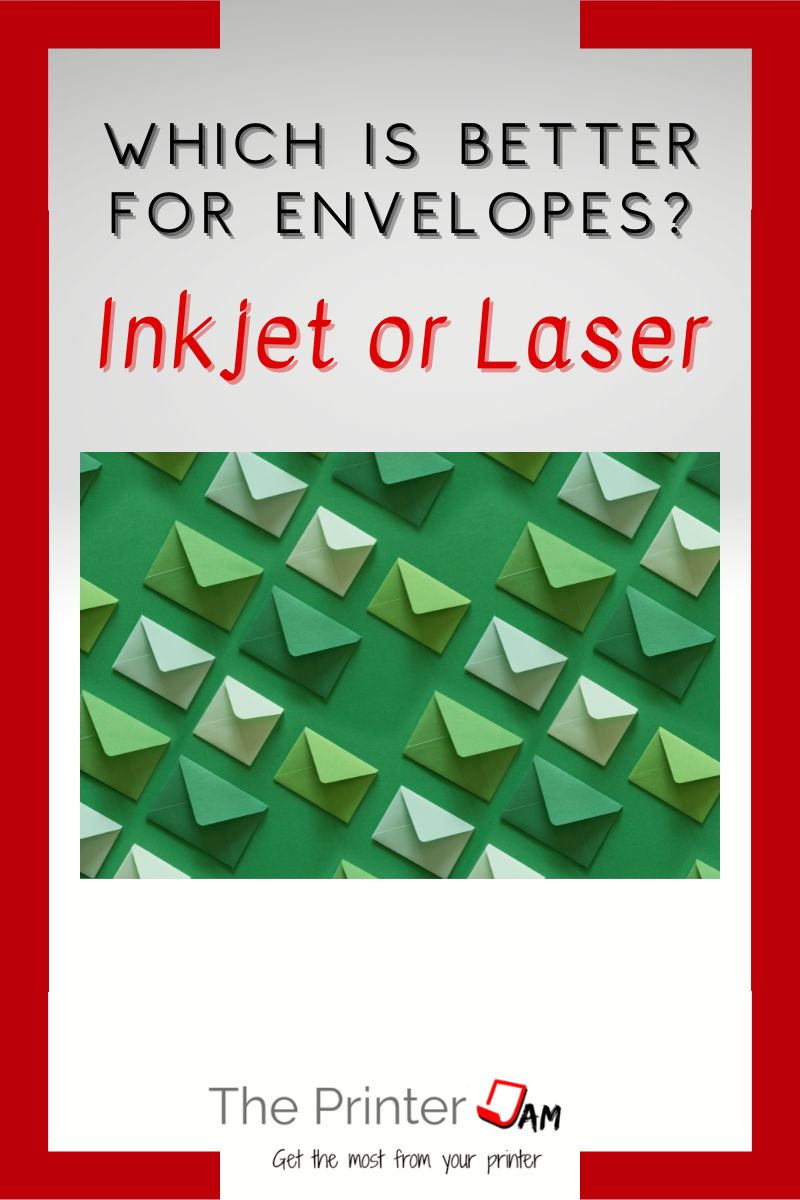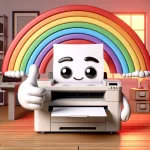
Since typewriters are obsolete printers have taken up the job of printing on envelopes. Envelopes are made to be used in inkjet and laser printers. Some printers are better than others at printing on envelopes.
In my experience inkjet printers are better for envelopes. A laser printer is better at text but they tend to wrinkle envelopes. Inkjet printers have a short and straight paper path. They are less likely to mangle the envelope.
Either type of printer can jam when feeding envelopes since they both have similar paper feeding systems. However, laser printers have bends in their paper path. They also use heat and pressure. All of which is rough on envelopes.
Inkjet printers don’t use heat or pressure. They also have a short and straight paper path. Which makes them better for envelopes of all sizes and shapes.
Pros and Cons of a Laser Printer
I’ve been a printer repair tech for over 25 years and envelopes are a source of frustration. At least once a month I’d get a service call about wrinkled envelopes.
It’s frustrating since there isn’t much we can do. We could replace the fuser. If that didn’t work, the only other option was to switch envelopes. Which was a problem after someone bought several cases of them.
Laser printers use heat and pressure to fuse the toner onto the paper. Some HP, Canon, Brother, and Lexmark fusers have levers to lighten the pressure specifically for envelopes. This helps some but some envelopes would wrinkle no matter what.
HP and Lexmark make envelope feeders for their laser printers but these only help with feeding the envelopes. The laser printer still wrinkles envelopes. It still uses heat and pressure which is hard on envelopes.
Advantages of a laser printer using envelopes:
- Text is sharp and bold
Disadvantages of a laser printer using envelopes:
- Tends to wrinkle envelopes
- Heat weakens the glue in envelopes
Pros and Cons of an Inkjet Printer
I’ve never seen a envelope feed for an inkjet printer like the ones they make for laser printers. They do have single sheet feed for envelopes and you can load between 10 to 15 envelopes in their paper trays. In my experience rear loading paper trays work better than cassettes for envelopes..
Inkjet printers don’t use pressure. They aren’t going to wrinkle any envelopes. The only issue with inkjet printers is their limited paper tray capacity.
Mailing machines from Pitney Bowes, FP, and Quadient use an inkjet process. Inkjet printers aren’t the greatest at text but these mailing machines are made for feeding envelopes. If you need to print 50 envelopes a month or more a mailing machine is a good option.
Advantages of an inkjet printer using envelopes:
- Won’t wrinkle the envelope
- Can print in color
- Less likely to jam
Disadvantages of an inkjet printer using envelopes:
- Fuzzy text
- Limited envelope capacity in paper tray
Best Way to Print on Envelopes
In my experience the best way to print envelopes is to not print on them. Get some Avery labels and print on those. They work with inkjet or laser printers and look professional. If you can print in color it helps too.
You load these as you would a sheet of paper. Then use Avery’s utility to enter your address or relevant information. Then print on the labels. After they come out of your printer simply peel off the labels and stick them on the envelopes.
In my experience this is much more reliable than printing directly on envelopes.
Summary
Envelopes, such as common #10, are made for both inkjet and laser printers. Each type has it’s strengths and weaknesses. Since laser printers tend to wrinkle envelopes, I recommend using an inkjet printer for envelopes.
Better still is printing on labels and avoid feeding envelopes through a printer altogether.
FAQ
A laser printer can print on envelopes. It’s likely to wrinkle them.
The best way I know to print addresses on envelopes is to get a sheet of address labelds and print on that.
Envelopes can be printed on with an inkjet printer. It’s likely to not be able to feed them.
Self sealed envelopes are made for laser printers.

The Copier Guy, aka Dave. I’ve worked on scanners, printers, copiers, and faxes since 1994. When I’m not fixing them I’m writing about them. Although, I’m probably better at fixing them. I’ve worked with every major brand. As well as several types of processes. If it uses paper I’ve probably worked on one.





